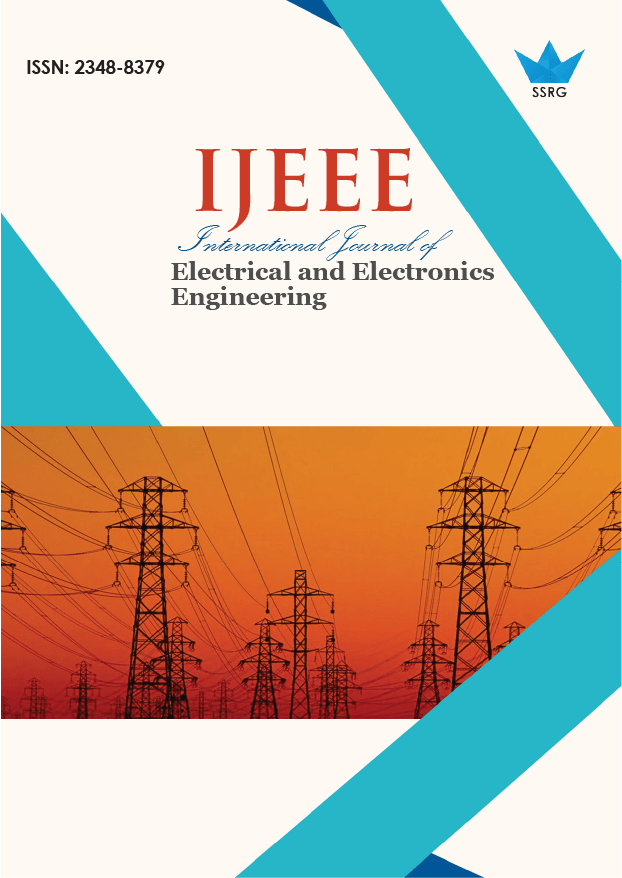Securing Fog Computing Networks: An Advanced Trust Management System Leveraging Fuzzy Techniques and Hierarchical Evaluation

| International Journal of Electrical and Electronics Engineering |
| © 2024 by SSRG - IJEEE Journal |
| Volume 11 Issue 12 |
| Year of Publication : 2024 |
| Authors : Shradhdha Thakkar, Jaykumar A. Dave |
How to Cite?
Shradhdha Thakkar, Jaykumar A. Dave, "Securing Fog Computing Networks: An Advanced Trust Management System Leveraging Fuzzy Techniques and Hierarchical Evaluation," SSRG International Journal of Electrical and Electronics Engineering, vol. 11, no. 12, pp. 229-234, 2024. Crossref, https://doi.org/10.14445/23488379/IJEEE-V11I12P120
Abstract:
This paper presents a Trust Management System (TMS) designed to counteract cyber-attacks in fog computing environments. The system integrates fuzzy AHP, hierarchical PROMETHEE methods, and fuzzy ranking to evaluate trust based on Quality of Service (QoS), Quality of Security (QoSec), and economic factors. Tested against Replay, On-Off, Bad-mouthing, and Ransomware attacks, the system demonstrates high detection accuracy, with error rates between 3.50% and 4.15%. The results show that the proposed TMS effectively enhances security and trust evaluation in fog computing networks.
Keywords:
Trust Management System (TMS), Fuzzy Analytical Hierarchy Process (AHP), Quality of Service (QoS), Quality of Security (QoSec).
References:
[1] Arwa Alrawais et al., “Fog Computing for the Internet of Things: Security and Privacy Issues,” IEEE Internet Computing, vol. 21, no. 2, pp. 34-42, 2017.
[CrossRef] [Google Scholar] [Publisher Link]
[2] Ravi Yadav, and Gaurav Baranwal, “An Efficient Trust Management Using Feedback Credibility Evaluation Method in Fog Computing,” Simulation Modelling Practice and Theory, vol. 120, 2022.
[CrossRef] [Google Scholar] [Publisher Link]
[3] Ivan Stojmenovic et al., “An Overview of Fog Computing and its Security Issues,” Concurrency and Computation Practice and Experience, vol. 28, no. 10, pp. 2991-3005, 2015.
[CrossRef] [Google Scholar] [Publisher Link]
[4] Farhana Jabeen et al., “Adaptive and Survivable Trust Management for Internet of Things systems,” IET Information Security, vol. 15, no. 5, pp. 375-394, 2021.
[CrossRef] [Google Scholar] [Publisher Link]
[5] Mohammed Al-khafajiy et al., “COMITMENT: A Fog Computing Trust Management Approach,” Journal of Parallel and Distributed Computing, vol. 137, pp. 1-16, 2020.
[CrossRef] [Google Scholar] [Publisher Link]
[6] Fatin Hamadah Rahman et al., “EnTruVe: Energy and Trust-Aware Virtual Machine Allocation in Vehicle Fog Computing for Catering Applications in 5G,” Future Generation Computer Systems, vol. 126, pp. 196-210, 2022.
[CrossRef] [Google Scholar] [Publisher Link]
[7] Sunday Oyinlola Ogundoyin, and Ismaila Adeniyi Kamil, “A Fuzzy-AHP Based Prioritization of Trust Criteria in Fog Computing Services,” Applied Soft Computing, vol. 97, 2020.
[CrossRef] [Google Scholar] [Publisher Link]
[8] Esubalew Alemneh et al., “A Two-Way Trust Management System for Fog Computing,” Future Generation Computer Systems, vol. 106, 206-220, 2020.
[CrossRef] [Google Scholar] [Publisher Link]
[9] Mohammad Aazam, Pham Phuoc Hung, and Eui-Nam Huh, “Smart Gateway Based Communication for Cloud of Things,” 2014 IEEE Ninth International Conference on Intelligent Sensors, Sensor Networks and Information Processing (ISSNIP), Singapore, 2014.
[CrossRef] [Google Scholar] [Publisher Link]
[10] Sakshi Bhardwaj, and Sonia Tomer, “Fog Computing: A Survey,” International Journal of Engineering Research & Technology (IJERT), vol. 5, no. 3, 2017.
[Google Scholar] [Publisher Link]
[11] Salvatore J. Stolfo, Malek Ben Salem, and Angelos D. Keromytis, “Fog Computing: Mitigating Insider Data Theft Attacks in the Cloud,” 2012 IEEE Symposium on Security and Privacy Workshops, San Francisco, CA, USA, 2012.
[CrossRef] [Google Scholar] [Publisher Link]
[12] Yingjuan Shi et al., “The Fog Computing Service for Healthcare,” 2015 2nd International Symposium on Future Information and Communication Technologies for Ubiquitous HealthCare (Ubi-HealthTech), Beijing, China, pp. 1-5, 2015.
[CrossRef] [Google Scholar] [Publisher Link]
[13] Md Raseduzzaman Ruman et al., “IoT Based Emergency Health Monitoring System,” 2020 International Conference on Industry 4.0 Technology (I4Tech), Pune, India, pp. 159-162, 2020.
[CrossRef] [Google Scholar] [Publisher Link]
[14] Qingsong Xie et al., “Machine Learning Methods for Real-Time Blood Pressure Measurement Based on Photoplethysmography,” 2018 IEEE 23rd International Conference on Digital Signal Processing (DSP), Shanghai, China, 2018.
[CrossRef] [Google Scholar] [Publisher Link]
[15] Kelvin K.F. Tsoi et al., “Blood Pressure Monitoring on the Cloud System in Elderly Community Centres: A Data Capturing Platform for Application Research in Public Health,” 2016 7th International Conference on Cloud Computing and Big Data (CCBD), Macau, China, 2016.
[CrossRef] [Google Scholar] [Publisher Link]
[16] Flavio Bonomi et al., “Fog Computing and its Role in the Internet of Things,” Proceedings of the first Edition of the MCC Workshop on Mobile Cloud Computing, pp. 13-16, 2012.
[CrossRef] [Google Scholar] [Publisher Link]
[17] Zhibo Pang et al., “Design of a Terminal Solution for Integration of In-Home Health Care Devices and Services towards the Internet-of-Things,” Enterprise Information Systems, vol. 9, no. 1, pp. 86-116, 2015.
[CrossRef] [Google Scholar] [Publisher Link]
[18] Ramón C. Hermida et al., “Decreasing Sleep-Time Blood Pressure Determined by Ambulatory Monitoring Reduces Cardiovascular Risk,” Journal of American College of Cardiology, vol. 58, no. 11, pp. 1165-1173, 2011.
[Google Scholar] [Publisher Link]

 10.14445/23488379/IJEEE-V11I12P120
10.14445/23488379/IJEEE-V11I12P120